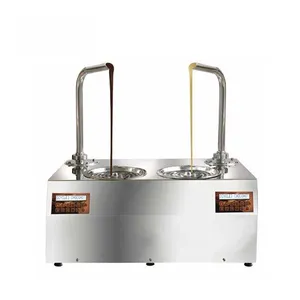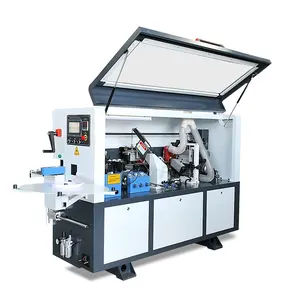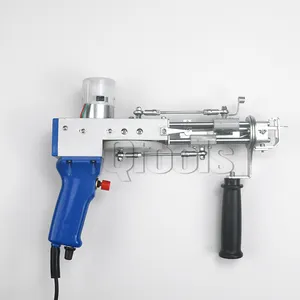Popular in your industry






























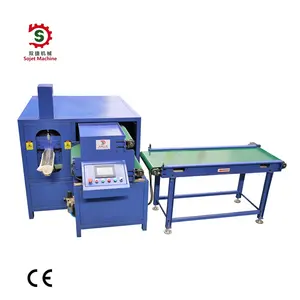
























Top categories
About tea rolling machine
In the intricate dance of tea production, the rolling of tea leaves is not just a step; it's an art that shapes the soul of the brew. As we delve into the world of tea rolling equipment, we uncover the pivotal role these machines play in transforming raw leaves into the aromatic infusions that captivate our senses. This essential guide will navigate through the complexities of choosing the right tea rolling equipment, ensuring that quality and productivity meet at the peak of perfection. Whether you're a seasoned tea producer or a novice in the industry, understanding the nuances of tea rolling is key to crafting a product that stands out in the global market.
Understanding Tea Rolling Equipment

The rolling of tea leaves is a critical process in tea production, aimed at breaking down the cell walls to release the inner juices and promote even moisture distribution. This step is essential as it initiates oxidation and enhances the tea's aromatic qualities. Various methods are employed for rolling, including mechanical machines that knead leaves between textured plates, and the rotorvane method used for CTC (Crush, Tear, Curl) style teas, which rapidly oxidizes the leaves. The intensity of rolling influences the extraction rate of flavors during brewing, with tightly rolled teas like oolongs offering multiple infusions, unlike the 'one and done' nature of typical tea bags.
Different teas undergo rolling at distinct stages of their processing. Oolong, black, and puerh teas are all rolled, with oolongs like Tie Guan Yin being tightly rolled to achieve their compact shape. Green teas may be rolled after the fixing step to shape the leaves, with Japanese varieties often steamed to facilitate rolling into a needle-like shape. White and yellow teas are generally not rolled, except for certain specialty pearl varieties. The rolling process varies significantly between tea types, with oolongs being rolled post-oxidation, unlike black teas which are rolled before.
Types of Tea Rolling Machines on Alibaba.com

Tea rolling machines are a vital component in the tea production process, designed to shape the tea leaves and enhance the flavor profile of the final product. Alibaba.com offers a diverse range of tea rolling equipment to cater to various business needs. Among the available options, there are electric bubble tea machines equipped with cup container sealer sealing capabilities, providing an all-in-one solution for tea packaging. For those dealing with powdered products, automatic sachet spices powder packaging machines are available, which are also suitable for coffee teabag filling.
The platform also lists sophisticated automatic tea sachet packing machines, which streamline the process of making and packaging teabags. High-speed edge sealing machines are another type, focusing on efficiency and speed for bubble tea cup sealing. For businesses targeting the agricultural sector, tea packing machines suitable for farms are offered, capable of handling spice powder packing as well as small tea bag packaging.
In addition to these, Alibaba.com features multi-function plastic roll packaging machines like the DZD-220, designed for small businesses, and ultrasonic seal pack machines for non-woven tea bag packing. For beverage outlets, there are automatic cup sealing machines that use aluminum roll film, ideal for sealing jelly, milk tea, yogurt, and other food beverages. Specialty machines such as the triangle pyramid tea bag film roll tagging machine cater to niche markets like drip coffee bag production.
Lastly, the selection includes manual and automatic tea leaf rolling machines, which are essential for processing leaves such as oolong and black tea. These machines come in various sizes and are made from durable materials like stainless steel, ensuring longevity and reliability in commercial tea leaf processing.
Orthodox vs. CTC Rolling: Choosing the Right Method
When considering the method for tea production, the choice between Orthodox and CTC rolling is pivotal. Orthodox tea rolling is a traditional approach, involving a series of steps: plucking, withering, rolling, oxidation, and drying. This method is known for preserving the unique characteristics of the tea leaves, resulting in a delicate flavor profile. In contrast, CTC (Crush, Tear, Curl) rolling is a more modern process, where leaves are passed through cylindrical rollers equipped with blades that cut, tear, and curl the leaves into small, uniform pellets. This method is designed for speed and efficiency, catering to high market demand and typically resulting in a stronger, more astringent flavor suitable for teas like masala chai. The decision between these two methods affects the final product's flavor, production cost, and time efficiency, making it a crucial consideration for tea producers.
Key Features to Consider When Selecting Tea Rolling Equipment
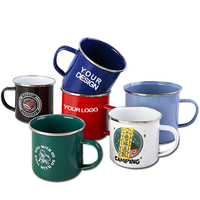
When selecting tea rolling equipment, it's crucial to consider specific features that enhance the tea's quality and the machine's performance. The construction of the machine is paramount; look for equipment where the disk surface is seamlessly pressed from stainless steel to ensure durability and a lower breakage rate of tea leaves. This design choice not only strengthens the machine but also increases the efficiency of the rolling process.
The mechanics of the machine are equally important. A tea rolling machine that employs worm gears for the kneading drum, driven by mechanically connected parts, ensures a consistent and controlled rolling action. The centrifugal force within the fixing disk, complemented by joists, subjects the tea to a precise kneading action between the upper gland and the joists of the lower fixing disk. The ability to adjust the pressure of the gland allows for customization of the kneading degree, catering to different types of tea and desired leaf conditions.
Efficiency is also a key feature, with productivity metrics such as the capacity per cycle being a practical consideration. Machines with a floating pressuring system by a single column screw can offer a balance between gentle handling of the tea leaves and the necessary pressure to achieve the desired leaf texture. These features collectively contribute to the improvement of the tea's brewing resistance and enhance its overall drinking value.
Material and Build Quality
Tea rolling machines are integral components in the tea production process, designed to shape the tea leaves and enhance the tea's flavor profile. When considering the material and build quality of these machines, it's essential to focus on durability and hygiene. Many tea rolling machines, such as the Commercial Stainless Steel Automatic Oolong Tea Leaves Twisting Making Equipment, are constructed from stainless steel, which offers longevity and resistance to corrosion. Stainless steel is also easy to clean, making it an excellent choice for food processing equipment where sanitation is paramount.
The build quality of tea rolling machines can vary, but robust construction ensures that the equipment can withstand the rigors of continuous operation. Machines like the Manual Oolong Tea Kneading Machine and the Commercial Stainless Steel Green Tea Rolling Machine are examples of equipment built to cater to different scales of tea production, from small businesses to larger commercial operations. The choice of material also impacts the tea's quality, as non-reactive metals like stainless steel prevent contamination and preserve the tea's natural flavors.
Efficiency is another critical aspect of the material and build quality. Machines equipped with automatic features, such as the Automatic rotary plate bowl sealing machine, leverage advanced sealing technology to maintain the freshness of tea products. The integration of plastic roll film technology in machines like the Automatic Milk Tea Cup Cover Plastic Roll Film Machine demonstrates the industry's move towards innovative packaging solutions that align with modern production needs.
Efficiency and Productivity Metrics
The 6CR series kneading rolling machines are engineered for the primary processing of tea, ensuring a delicate balance between efficiency and the preservation of tea leaf quality. These machines are designed to handle varying capacities, from small-scale family tea farms to larger tea plantations. The productivity metrics are impressive, with models handling 5-10 kg per cycle, and the larger ones capable of processing 90-100 kg, catering to diverse operational scales and needs.
The machines feature a rolling system that employs a multi-bearing setup, ensuring smooth operation and reliability. The kneading drum's inner diameter varies across models, accommodating different volumes and enhancing the rolling process's effectiveness. The motor power is scaled to match the size and capacity of each model, ranging from smaller units to the largest in the series, all designed to optimize energy consumption while maximizing output.
Each machine incorporates a floating pressuring system or a dual-beam pressuring system, depending on the model, to apply the right amount of pressure during the rolling process. This system is crucial for achieving the desired level of leaf cell damage, which is a key factor in the tea's final quality. The thoughtful design of these machines ensures that the rolling process is not only efficient but also produces a tightly rolled product with a consistent quality, reflecting the intricate interplay between machine precision and tea processing artistry.
Applications and Versatility
Tea rolling machines are integral to the tea production process, offering a range of applications that cater to various types of tea and packaging needs. From enhancing the flavor profile of Oolong tea through precise twisting and kneading to the efficient packaging of tea bags for commercial distribution, these machines demonstrate remarkable versatility. They are designed to handle different materials, including nylon mesh and plastic film, suitable for creating pyramid tea bags or sealing cups for bubble tea. The adaptability of tea rolling equipment extends to various forms of tea leaves, whether processing delicate green tea or robust black tea leaves. Furthermore, the technology accommodates a spectrum of sealing methods, from ultrasonic sealing for tea bags to automatic cup sealing for beverages, ensuring that products meet industry standards and consumer expectations. The machinery's applications are not limited to tea alone; some models are adept at producing edible wafer cups, showcasing the equipment's flexibility in food and beverage manufacturing.
Advantages of High-Quality Tea Rolling Machines
The distinction between dust tea and whole leaf tea is significant when considering the advantages of high-quality tea rolling machines. Whole leaf teas, which are carefully handled during the manufacturing process, retain a larger surface area and contain more essential oils. This results in a richer extraction of vitamins, minerals, and complex flavors when steeped, offering a superior tea drinking experience. High-quality tea rolling machines are instrumental in preserving the integrity of these whole leaves, ensuring that the tea's natural properties are not compromised during processing.
Furthermore, the precision in the plucking of tea leaves for whole leaf production speaks to the meticulous nature of the process, which is supported by advanced rolling equipment. The ability to maintain the leaf's structure translates to a more authentic and premium beverage. On the other hand, CTC tea production, which involves the crushing, tearing, and curling of the leaves, results in smaller, hardier pellets that are suitable for tea bags. The right tea rolling machine can efficiently grade the processed tea into various sizes, including the finer dust grades, without sacrificing the tea's inherent quality.
In essence, the use of high-quality tea rolling machines facilitates a versatile production that caters to both whole leaf tea aficionados and those who prefer the convenience of tea bags. The technology ensures that whether the tea is destined for a delicate infusion or a robust brew, the end product is consistent, flavorful, and retains the tea's natural essence. This versatility is a clear advantage for producers looking to meet diverse consumer preferences while maintaining high standards of tea production.
Maintenance and Longevity
Regular maintenance is crucial for the longevity and proper functioning of tea rolling machines. It's important to routinely inspect and tighten any loose fasteners to prevent mechanical failures during operation. Keeping the machine clean is also essential to avoid tea leaf contamination. After extended use, lubrication of moving parts such as V-belts and chains is necessary to ensure smooth operation.
Components like bearings and chains should be checked for wear and replaced as needed to maintain the machine's performance. Cleaning out tea residue and other debris is also important for hygiene and to prevent any operational hindrances. Users should be cautious of allowing tea leaf fragments or other debris to enter the machine, as this can cause damage and affect tea quality.
Furthermore, it's advisable to avoid running the machine continuously for long periods to prevent overheating and potential damage. Safety should always be a priority during maintenance to prevent injuries. By conducting regular inspections and addressing issues promptly, the reliability of the tea rolling machine can be preserved, ensuring consistent tea quality.
Conclusion
In conclusion, the journey from leaf to cup is a symphony of processes, with tea rolling equipment playing a critical role in defining the tea's character and appeal. From the traditional artistry of Orthodox rolling to the efficiency of CTC machines, the choice of equipment impacts flavor, aroma, and the very essence of the tea. High-quality machines not only preserve the integrity of whole leaves but also cater to the robust demands of tea bag production. With considerations ranging from material and build quality to maintenance and longevity, selecting the right tea rolling machine is a strategic decision that influences productivity metrics and the versatility of applications. By investing in the appropriate machinery, tea producers can ensure the longevity of their operations and the consistent quality of their product, satisfying a spectrum of consumer preferences and securing a place in the competitive landscape of tea production.

